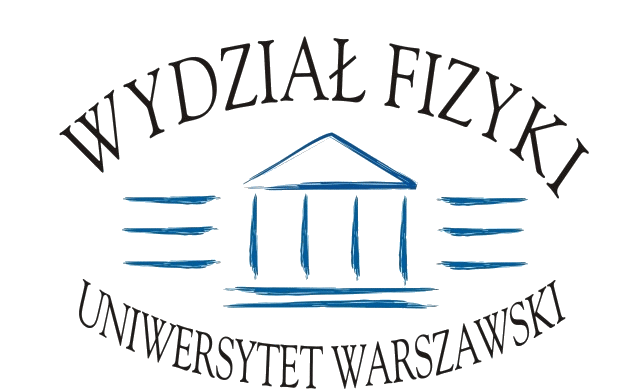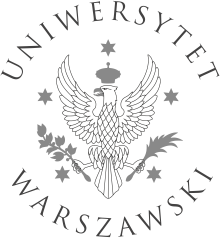Środowiskowe Seminarium z Informacji i Technologii Kwantowych
2012/2013 | 2013/2014 | 2014/2015 | 2015/2016 | 2016/2017 | 2017/2018 | 2018/2019 | 2019/2020 | 2020/2021 | 2021/2022 | 2022/2023 | 2023/2024 | 2024/2025 | 2025/2026 | kanał YouTube
do roku 2023/2024 Seminarium Kwantowa Informacja | kanał YouTube
2025-11-20 (Czwartek)
Piotr Grochowski (Palacky University Olomouc)
Phase-insensitive force sensing
Quantum sensing with continuous-variable systems offers a versatile platform for reaching fundamental precision limits. In this work, we develop a general theoretical framework for phase-insensitive sensing with bosonic modes subject to displacements with random phase, applicable to both single-mode and multimode scenarios. We derive analytical bounds on the achievable precision in terms of first-order correlations and average excitations, revealing how non-Gaussian resources can maximize sensitivity while maintaining robustness to decoherence. This framework provides a unified perspective for understanding force and amplitude estimation in experimentally relevant, lossy, and phase-randomized environments.
Specializing to the single-mode case [1], we find that excitation-number–resolving measurements remain optimal and that N-spaced Fock states and number-squeezed Schrödinger cat states can approach the fundamental bound while mitigating decoherence. In the multimode, distributed setting [2], we show that first-order correlations enable a collective quantum advantage that scales linearly with total excitations, even without a shared phase reference. Multimode states with definite joint parity saturate this limit and can be probed efficiently via local parity measurements. Our results provide experimentally accessible strategies for enhancing phase-insensitive quantum sensing across mechanical, optical, microwave, and hybrid continuous-variable platforms.
[1] PTG, Radim Filip, arXiv:2505.20832, to appear in Phys. Rev. Lett.
[2] PTG, Radim Filip, in prep.
Specializing to the single-mode case [1], we find that excitation-number–resolving measurements remain optimal and that N-spaced Fock states and number-squeezed Schrödinger cat states can approach the fundamental bound while mitigating decoherence. In the multimode, distributed setting [2], we show that first-order correlations enable a collective quantum advantage that scales linearly with total excitations, even without a shared phase reference. Multimode states with definite joint parity saturate this limit and can be probed efficiently via local parity measurements. Our results provide experimentally accessible strategies for enhancing phase-insensitive quantum sensing across mechanical, optical, microwave, and hybrid continuous-variable platforms.
[1] PTG, Radim Filip, arXiv:2505.20832, to appear in Phys. Rev. Lett.
[2] PTG, Radim Filip, in prep.
2025-11-06 (Czwartek)
Jan Kochanowski (Inria, Institut Polytechnique de Paris)
Efficient Quantum Measurements: Computational Max- and Measured Rényi Divergences and Applications
Quantum information processing is limited, in practice, to efficiently implementable operations. This motivates the study of quantum divergences that preserve their operational meaning while faithfully capturing these computational constraints. Using geometric, computational, and information theoretic tools, we define two new types of computational divergences, which we term computational max-divergence and computational measured Rényi divergences.In this talk I will give an overview of the construction of our framework, based on cones of efficient binary measurements, and will detail their applications to hypothesis testing, quantum resource quantification and entanglement distillation/ cost.
2025-10-30 (Czwartek)
Leonardo Novo (INL Braga)
Multiphoton interference with partially distinguishable photons
In this talk, I will start by discussing the boson sampling problem and how it led to one of the first claims of an experimental demonstration of a quantum computational speedup. A boson sampler is a non-universal quantum computer that is able to interfere multiple photons over many optical modes and detect where the photons are at the output. A major source of imperfections in such devices comes from the fact that the photons are not exactly identical and have small differences in their internal degrees of freedom. I will discuss techniques that can be used to distinguish an ideal boson sampler and one involving partially distinguishable photons and require only an efficient classical postprocessing of the experimental data. Moreover, I will discuss the complex relation between the phenomenon of boson bunching and particle distinguishability, showing different situations where lower Hong-Ou-Mandel visibilities between the input photons can lead to higher bunching, contrary to common expectation.
2025-10-23 (Czwartek)
Marzena Szymańska (University College London, CFT PAN)
Novel Non-equilibrium Phenomena in Quantum Fluids of Light
2025-10-16 (Czwartek)
Michał Siemaszko (MIMUW)
Neuromorphic computing based on quantum memristor
Machine learning has recently developed novel approaches, mimicking the synapses of the human brain to achieve similarly efficient learning strategies. Such an approach retains the universality of standard methods, while attempting to circumvent their excessive requirements, which hinder their scalability. In this landscape, quantum (or quantum inspired) algorithms may bring enhancement. However, high-performing neural networks invariably display nonlinear behaviours, which poses a challenge to quantum platforms, given the intrinsically linear evolution of closed systems. One possible architecture which can overcome this issue is the use of quantum memristors.
In this talk, I will begin by introducing the general concept of neuromorphic computing, then discuss how photonic quantum memristors fit within this framework, and finally present experimental results demonstrating neuromorphic computing with a photonic quantum memristor (based on arXiv:2504.18694.).
In this talk, I will begin by introducing the general concept of neuromorphic computing, then discuss how photonic quantum memristors fit within this framework, and finally present experimental results demonstrating neuromorphic computing with a photonic quantum memristor (based on arXiv:2504.18694.).
2025-10-09 (Czwartek)
Ana Predojević (Stockholm University, Sweden)
Quantum light sources: entanglement generation and characterization
Further development of quantum communication demands novel sources of quantum light, entanglement characterization methods, and improved communication protocols. Single quantum dots are established emitters of single photons and entangled photon pairs. By means of resonant excitation they generate photon pairs with high efficiency, low multi-photon contribution, and suitable for entangling schemes such as time-bin entanglement. The entanglement of photons generated by quantum dots can be employed in free-space and fibre-based quantum communication. However, the achievable degree of entanglement and the source readiness to be deployed in quantum communication protocols depend on additional functionalities, including high photon collection efficiency. I will present engineered photonic systems that allow for entangled photon pair sources to be more efficient. Also, I will introduce novel methods to characterize sources of entangled photons.
2025-10-02 (Czwartek)
Marco Fellous Asiani (QOT UW)
Magic states are rarely the most important resource to optimize
The original and best-understood way of doing fault-tolerant quantum computing uses concatenated error-correction codes, with recent advances suggesting that they may be as good as more recent surface codes. Yet there are few tools to evaluate the qubit resources that concatenated codes require. Hence, we propose a method giving closed-form equations for the qubit resources required by any concatenated code. These equations remain simple for an arbitrary number of levels of concatenation, providing an ideal tool to compare and minimize the resource costs of such codes. We then evaluate the resources for gate operations that require the injection of complicated states called “magic states”. It was expected that such magic operations dominate the resources required by a calculation, and so numerous works proposing optimizations of their resource cost. Our work reveals that this expectation is wrong, as already seen in others’ work on surface codes; magic operations are rarely a dominant cost for concatenated codes. Optimizations affecting all operations naturally have more impact than those affecting magic operations alone, yet our unexpected conclusion is that the former can reduce qubit resources by a few orders of magnitude while the latter give only marginal reductions. More precisely, we show this in full detail for a 7-qubit scheme with Steane error-correction gadgets or flag-qubits gadgets, and argue that our observations are likely to be representative of the behavior for typical concatenated codes.






